#mordor currency
Explore tagged Tumblr posts
Text
I've been sorting parts from Lego Elves today, and they contain these, which would work perfectly as the currency in Mordor. :-)
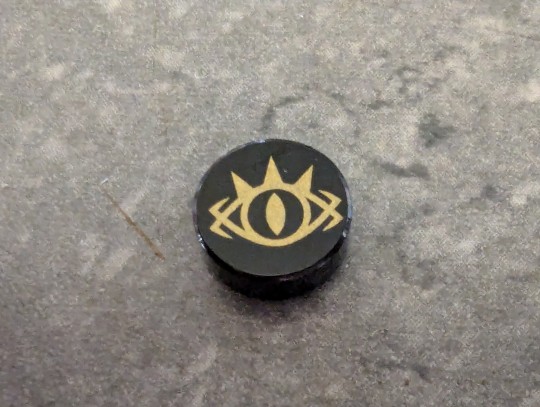
#lord of the rings#sauron#mordor currency#lego#sorting is fun#you never know what you discover#also: i need to order these bricks because i don't have enough of them#yes you do#in dozens of boxes and sets that you own
16 notes
·
View notes
Text
Book Sauron vs. Movie Sauron
(and why people complain about Rings of Power's portrayal of the character. In my opinion). Nerd rant I guess.
I think a big reason why a some viewers are unhappy with RoP Sauron is that there is a big discrepancy between Sauron in the books, and Sauron in the Peter Jackson trilogy. And most people have probably only seen the movies (which is fine, I am not a book purist and I have personally only read 1.5 of the books, and tbh I found them pretty boring.)
But anyway:
In the films, Sauron is an entity. He can’t take physical form. He is evil incarnate, a nameless fear, a flaming eye etc. Whereas in the books, Sauron is way more of a person and actual character.
We only hear stuff about him from other people, but he does have a physical form. Sauron personally tortured Gollum, and Gollum was later able to describe his appearance to Gandalf, saying that he was missing some fingers on one hand from when Isildur defeated him. We also learn from Eomer that Sauron had approached Rohan wanting to buy horses from them. Rohan refused, so Sauron just stole the horses instead - but his initial intention was to buy the animals fair and square, with normal human currency. At a "great price" according to Eomer.
Recently I also read that Sauron had apparently become somewhat fond of Shelob and jokingly referred to her as his cat lmao. That is mentioned in the Shelob chapter in The Two Towers. Just little things like that make a huge difference. I cannot imagine movie!Sauron making jokes like that.
Mordor is also different book to movie. In the books, there are some farmlands in the Southern parts of Mordor, which makes sense because orcs do need food obviously. Return of The King says this:
"Neither he nor Frodo knew anything of the great slave-worked fields away south in this wide realm, beyond the fumes of the Mountain by the dark sad waters of Lake Nurnen; nor of the great roads that ran away east and south to tributary lands, from which the soldiers of the Tower brought long waggon-trains of goods and booty and fresh slaves. Here in the northward regions were the mines and forges.”
In Tolkien’s own illustrations, Mordor also looks a little bit more normal.
All that to say: if your idea of Sauron is an evil-incarnate entity who has no physical form and only talks in raspy, wheezing Black Speech, then yes, it is probably very grating to see Charlie Vickers running around with hair bows and pretty little ringlets falling in his face, being sarcastic, flirting with elf-maidens etc. But I personally don't think there is anything inherently un-Tolkien about it. Despite Tolkien's vocal dislike of allegory, Sauron is a pretty obvious allegory for the devil/Lucifer - he is quite literally a fallen angel taking on various forms to tempt and charm people into doing his bidding. I think the true evil-incarnate character is Morgoth. Sauron is more likely to weight his options and try for a diplomatic solution before throwing all his resources into waging war on people.
57 notes
·
View notes
Text
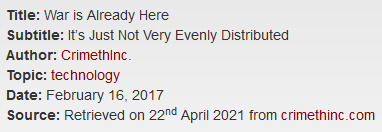
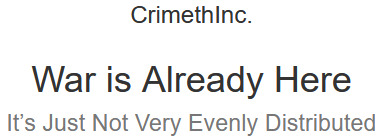
Author: CrimethInc. Topic: technology
“The future is already here,” Cyberpunk pioneer William Gibson once said; “it’s just not very evenly distributed.” Over the intervening decades, many people have repurposed that quote to suit their needs. Today, in that tradition, we might refine it thus: War is already here—it’s just not very evenly distributed.
Never again will the battlefield be just state versus state; it hasn’t been for some time. Nor are we seeing simple conflicts that pit a state versus a unitary insurgent that aspires to statehood. Today’s wars feature belligerents of all shapes and sizes: states (allied and non-allied), religious zealots (with or without a state), local and expatriate insurgents, loyalists to former or failing or neighboring regimes, individuals with a political mission or personal agenda, and agents of chaos who benefit from the instability of war itself. Anyone or any group of any size can go to war.
The increased accessibility of the technology of disruption and war[1] means the barrier to entry is getting lower all the time. The structure of future wars will sometimes feel familiar, as men with guns murder children and bombs level entire neighborhoods—but it will take new forms, too. Combatants will manipulate markets and devalue currencies. Websites will be subject to DDoS attacks and disabling—both by adversaries and by ruling governments. Infrastructure and services like hospitals, banks, transit systems, and HVAC systems will all be vulnerable to attacks and interruptions.
In this chaotic world, in which new and increasing threats ceaselessly menace our freedom, technology has become an essential battlefield. Here at the CrimethInc. technology desk, we will intervene in the discourse and distribution of technological know-how in hopes of enabling readers like you to defend and expand your autonomy. Let’s take a glance at the terrain.
Privacy
The NSA listens to, reads, and records everything that happens on the internet.
Amazon, Google, and Apple are always listening[2] and sending some amount[3] of what they hear back to their corporate data centers[4]. Cops want that data. Uber, Lyft, Waze, Tesla, Apple, Google, and Facebook know your whereabouts and your movements all of the time. Employees spy on users.
Police[5] want access to the contents of your phone, computer, and social media accounts—whether you’re a suspected criminal, a dissident on a watch list, or an ex-wife.
The business model of most tech companies is surveillance capitalism. Companies learn everything possible about you when you use their free app or website, then sell your data to governments, police, and advertisers. There’s even a company named Palantir, after the crystal ball in The Lord of the Rings that the wizard Saruman used to gaze upon Mordor—through which Mordor gazed into Saruman and corrupted him.[6] Nietzsche’s famous quote, “When you look long into an abyss, the abyss also looks into you,” now sounds like a double transcription error: surely he didn’t mean abyss, but app.
Security
Self-replicating malware spreads across Internet of Things (IoT) devices like “smart” light bulbs and nanny cams, conscripting them into massive botnets. The people who remotely control the malware then use these light bulbs and security cameras to launch debilitating DDoS[7] attacks against DNS providers, reporters, and entire countries.
Hackers use ransomware to hold colleges, hospitals, and transit systems hostage. Everything leaks, from nude photos on celebrities’ phones to the emails of US political parties.
Capital
Eight billionaires combined own as much wealth as the poorest 50% of the world’s population. Four of those eight billionaires are tech company founders.[8] Recently, the President of the United States gathered a group of executives to increase collaboration between the tech industry and the government.[9]
The tech industry in general, and the Silicon Valley in particular, has a disproportionately large cultural influence. The tech industry is fundamentally tied to liberalism and therefore to capitalism. Even the most left-leaning technologists aren’t interested in addressing the drawbacks of the social order that has concentrated so much power in their hands.[10]
War
Nation states are already engaging in cyber warfare. Someone somewhere[11] has been learning how to take down the internet.
Tech companies are best positioned to create a registry of Muslims and other targeted groups. Even if George W. Bush and Barack Obama hadn’t already created such lists and deported millions of people, if Donald Trump (or any president) wanted to create a registry for roundups and deportations, all he’d have to do is go to Facebook. Facebook knows everything about you.
The Obama administration built the largest surveillance infrastructure ever—Donald Trump’s administration just inherited it. Liberal democracies and fascist autocracies share the same love affair with surveillance. As liberalism collapses, the rise of autocracy coincides with the greatest technical capacity for spying in history, with the least cost or effort. It’s a perfect storm.
This brief overview doesn’t even mention artificial intelligence (AI), machine learning, virtual reality (VR), augmented reality (AR), robots, the venture capital system, or tech billionaires who think they can live forever with transfusions of the blood of young people.
Here at the tech desk, we’ll examine technology and its effects from an anarchist perspective. We’ll publish accessible guides and overviews on topics like encryption, operational security, and how to strengthen your defenses for everyday life and street battles. We’ll zoom out to explore the relation between technology, the state, and capitalism—and a whole lot more. Stay tuned.
Footnotes
[1] A surplus of AK-47s. Tanks left behind by U.S. military. Malware infected networked computer transformed into DDoS botnets. Off the shelf ready to execute scripts to attack servers.
[2] Amazon Echo / Alexa. Google with Google Home. Apple with Siri. Hey Siri, start playing music.
[3] What, how much, stored for how long, and accessible by whom are all unknown to the people using those services.
[4] Unless you are a very large company, “data center” means someone else’s computer sitting in someone else’s building.
[5] Local beat cops and police chiefs, TSA, Border Patrol, FBI… all the fuckers.
[6] Expect to read more about Palantir and others in a forthcoming article about surveillance capitalism.
[7] Distributed Denial of Service. More on this in a later article, as well.
[8] Bill Gates, Jeff Bezos, Mark Zuckerberg, Larry Ellison. In fact, if you count Michael Bloomberg as a technology company, that makes five.
[9] In attendance: Eric Trump. Brad Smith, Microsoft president and chief legal officer. Jeff Bezos, Amazon founder and CEO. Larry Page, Google founder and Alphabet CEO. Sheryl Sandberg, Facebook COO. Mike Pence. Donald Trump. Peter Thiel, venture capitalist. Tim Cook, Apple CEO. Safra Catz, Oracle CEO. Elon Musk, Tesla CEO. Gary Cohn, Goldman Sachs president and Trump’s chief economic adviser. Wilbur Ross, Trump’s commerce secretary pick. Stephen Miller, senior policy adviser. Satya Nadella, Microsoft CEO. Ginni Rometty, IBM CEO. Chuck Robbins, Cisco CEO. Jared Kushner, investor and Trump’s son-in-law. Reince Priebus, chairman of the Republican National Committee and White House chief of staff. Steve Bannon, chief strategist to Trump. Eric Schmidt, Alphabet president. Alex Karp, Palantir CEO. Brian Krzanich, Intel CEO.
[10] We’ll explore this more in a later article about “The California Ideology.”
[11] Probably a state-level actor such as Russia or China.
#technology#Privacy#Security#Capital#War#anarchism#anarchy#anarchist society#practical anarchy#practical anarchism#resistance#autonomy#revolution#communism#anti capitalist#anti capitalism#late stage capitalism#daily posts#libraries#leftism#social issues#anarchy works#anarchist library#survival#freedom
7 notes
·
View notes
Text
Disliking games isn't anything special, but the Shadow of Mordor/War series I genuinely find revolting to play.
"hey kids, is your attention span drastically low? how about bombarding you with tons of prompts and mechanics and useless currencies, level-ups, challenges and collectibles? don't pay attention to the awful LOTR fanfiction we cooked up, it's obscured by Live Service mechanics anyway!"
4 notes
·
View notes
Text










Newberry National Volcanic Monument, OR (No. 16)
5. See the Big Obsidian Flow
Even in a land of volcanic marvels, the Big Obsidian Flow is a show-stopper. A product of the Newberry Volcano’s most recent eruption, the surreal landscape of the obsidian flow will have you feeling like you’ve stepped into another world. The short and sweet 0.6-mile trail winds through fields of pumice and obsidian left in the wake of the eruption around 1,300 years ago, which spread ash as far as Idaho. The lava flow ended abruptly and is now a steep hillside of volcanic rocks next to pine forests.
Obsidian is perhaps the most visually striking of all the volcanic rocks. Smooth black stones with their unique luster stand out against the contrasting pale pumice. Surprisingly, living plants dot the otherwise desolate flow. Regular interpretive signs line the path with details about the area’s geology and fun facts about obsidian. I learned that:
Obsidian has been used as currency in the past.
Scalpels made with obsidian are sharper than those of steel.
Unique volcanic conditions created the obsidian flow. Obsidian forms when silica-rich lava cools quickly at the Earth’s surface, preventing the formation of crystals that would alter its glassy appearance. It also requires a fairly recent eruption to prevent alteration of the obsidian by normal environmental conditions, primarily the uptake of water, over time. In geologic time, an eruption 1,300 years ago is pretty similar to saying yesterday, which means the obsidian still has its particular and fragile qualities at the Newberry flow. Walking through it feels like exploring an alien planet, or perhaps Mordor, and evokes a sense of both awe and adventure.
Source
#Newberry National Volcanic Monument#travel#original photography#vacation#tourist attraction#landmark#landscape#countryside#geology#nature#flora#Deschutes County#USA#summer 2023#Oregon#Lava Flow#Lava Butte#tree#Pacific Northwest#Lava Butte Lookout#Deschutes National Forest#Oregon Cascades#Big Obsidian Flow#Cascade Volcanic Arc#Mount Bachelor
1 note
·
View note
Text
Sorry for the reblog comment but the tags I put on the last reblog were both garbled in execution and also cut off by tumblr's?? TAG limit? Didn't know it had one of those but just for clarity;
Whilst I fully agree that Tolkien should be dragged down from this uncritisisable pedastal, I do admittedly find the full quote still a little irritating. But that is more because these arent questions we dont know the answers too. And I don't mean that in a 'so GRRM should stop talking about what he doesn't understand' way. I mean it in a kind of... people have this perspective of Middle Earth as this pure fantasy that has troubling implications but is otherwise pure in motive and is really in fact 'above' all these 'base' considerations like 'racism' and so forth. They both infantalise Tolkien's efforts whilst simultaneously canonising him into untouchable sainthood. Which I feel like GRRM encourages with these lines of thinking, he is implying that Tolkien just didn't think about these things, 'he didn't ask the questions' and hence that all the issues within his works are accidents that happened along the way of creating a nice story about friendship and hope or whatever. He can't possibly have meant to create all these uncomfortable implications! We shouldn't ask if Aragorn killed all the baby orcs because that's not the POINT you just don't UNDERSTAND him etc etc.
When.. this is a fundamentally false concept of what is actually in the books. The answers to GRRM's questions are in there, or the expanded literature at times. Tolkien did think about it, he just thought about it with a very eugenicist-catholic bend and created a world-logic that justifies that view.
So, ticking off the first parts, perhaps nothing explicitely tells you about the taxation aspect, but Gondor has it's own named currency, it has labour unions, universal healthcare, farmers and trade ports and the like. So Aragorn's tax policy probably aligned with supporting those systems and remained pretty much the same as the Steward's tax policy before him. Yes, Aragorn maintained a standing army in order to 'subjugate the south' and reclaim Arnor, he and Eomer often campaigned in the south and east together. How did he deal with famine and flood? Aragorn's reign was blessed by god (Eru), he has a canonically in-universe-confirmed divine right to rule, so likely he didn't have to deal with either of those during his lifetime.
BUT, and far more pertinent to the point, the other questions? They are also answered. Yes and yes, orcs would have been summarily hunted and slaughtered wherever they might have been found, even their children. There is some debate about whether orcs are included within the 'slaves of Mordor' who were given lands within Mordor to make their own after the war, but personally I cannot see that being the case. The slaves of Mordor are specifically the slave-race men of Nurn who were forced to provide food for Sauron's armies. Orcs cannot live in the sun, Nurn would never have been suitable for them. And more importantly the in-world logic of Middle Earth is explicit in it's point that the Orcs are inherently evil in a religious sense. Even when we hear from them in private moments during Sam's encounter with Mordor Orcs, despite them clearly not liking 'the bosses', their idea of a good life after the war is to become mercenary looters. They cannot live amongst the 'civilised' races of middle earth, they are evil to their core. Some versions of orc origins actually have them as soulless automatons, though Tolkien never properly decided upon how orcs actually came to be. But in essentials; they are evil, they should be killed, they were created specifically to be the foot soldiers in a divine war against Eru in which Sauron desired the throne of the world. This makes them irredeemable in the inner-world logic of LotR.
The point is lotr was never a pure simple good fantasy, it was a catholic fantasy about a world in which inherrent racial purity is real and exists and drives the actions and events of the story. The films imposed this veil of purity onto the books, ignoring or rewriting all the political complexities, the overt religiosity, and the part where Faramir eulogises upon the 'hierarchy of men' where he is 'high' and the rohirrim are 'middle' and the Haradrim are 'men of darkness'. In the books the only veil between the discomfort of these baked in narratives and the reader was the fact that all the main characters we love so much agreed with killing little baby orcs in their cradles. So the reader is drawn to ignore or gloss over the horrors inherent in, say, 'aragorn subjugated the south', or gimli being threatened with death at the lothlorien border for just being a dwarf, or when Gandalf advocates strongly for mercy some of the time (gollum and saruman) but doesn't encourage Aragorn to do anything of the sort for 'the south'.
Lotr is about racial hierarchy, it's not a woopsie daisy accident that this all happened. Elves are better than humans who are better than orcs, and all of this depending upon how close they are to god or not. Divinity and the belief in Eru is something you inherit from your 'race' and your class is divinely ordained too, class in fact is also pretty heavily tied to one's race! Amongst hobbits, the 'noble' hobbits come from the pale-skinned fallohides, whilst most of the common hobbits are of the brown-skinned harfoots, Sam included. It doesn't actually really matter all that much what you do as a person, elves and other divine beings that commit evil acts are still considered divine (Gandalf is enamoured with Feanor and Saruman cannot be executed and is in fact released despite having committed mass murder of a whole third of a country) and... well no men of darkness in the books do faithful deeds, but if they did that would not 'elevate' them.
I know this feels like I've gone completely off the rails but essentially the point I'm trying to make here is that GRRM's questions are answered questions, it's just the answers are usually some iteration of; 'well, in this world, god is real and racial hierarchies are real and class divisions are fine because everyone has their rightful place as defined by fate and if noble men love god and are faithful then they are good and if they don't then they are tragically misguided and pityable but ultimately in the wrong (Denethor and Boromir) and men that are not racially divine are evil and should be subjugated or killed by faithful men for the ultimate good of god and orcs are the worst of the worst to the point that the only choice is to kill them and be glad for it.' It is, in the literal sense of the word, an upper class english generic white catholic fantasy of what they want reality to be like.
Personally I don't like GRRM's books, I don't think he portrays a realistic look at human societies either, and I have no interest in a competative comparison between him and Tolkien. But the divergence between them is not that GRRM thinks about systemic genocide and Tolkien doesn't, it's that Tolkien resolves the issue of systemic genocide by creating a world in which (at least he believes) systemic genocide of orcs is good and fine and no one should even really question it's rightness. He creates a eugenicist fantasy. Which is something I think is too easily glossed over with rhetoric like 'he didn't think about x' or 'thats not the point of the books' or the like. Hence why the quote still irritates me.
In any case I hope that was clearer than the tags!
everyone who doesn't include the full quote when mocking GRRM's "what was Aragorn's tax policy" rhetorical question owes me $200
2K notes
·
View notes
Text
!!!!!!!!!!!!!!!!!!!!!!!!!!!!!!!!!!!!!!!!!!! !!!!!!!!!!!!!!!!!!!!!!!!!!!!!!!!!!!!!!!!!!!!!!!!!!!!
#no you don't understand how important this is to me#i had been looking forward to the sequel to shadow of mordor for years#FOR YEARS#and then they shat it out like that#with the slimy stinky loot boxes and online marketplace and currency all over it#and i couldn't buy it#i couldn't#i had wanted this thing for so long and they ruined#and now it's half a year later#and i still haven't bought this game#but now i might be able to#give these devs my money#without a bad conscience#personal#gaming
1 note
·
View note
Photo

Let me know if I am missing something here but lately I have noticed a spike in the rage directed at gaming companies relating to micro transactions and related paid content. Specifically with shadow of war and this new Star Wars game battlefront 2. Admittedly I may not have all the facts here, but it sounds like people are complaining about nothing or at least nothing new that hasn’t existed for 20+ years. So shadow of war, my understanding was people were complaining that you were “forced” to buy loot chests with real money. I am pretty sure I am nearing the end of this game and have yet to buy any gold with real money. So can anyone explain how anyone is forced to do anything? Aren’t these loot chests just a short cut for those who want to spend some real money? Isn’t everything in the chests obtainable from just playing the game? Battlefront I am less familiar with, not actually played it, but the issue I am seeing is characters are locked until you have either earned enough in game currency or paid real money to unlock them. Again, is anyone forced to spend real money? Haven’t characters being locked been a common feature since the 90s with street fighter and tekken? Playing call of duty or literally any game, you generally don’t have access to everything all at once, having to unlock gear and characters and weapons by playing or paying. So why has everyone got their panties in a bunch now?
#shadow of war#shadow of mordor#starwars#Star Wars#battlefront ii#star wars battlefront 2#microtransactions#tekken#pay to win#lootcrate#lootbox#Ingame currency#ea games#middle earth#street fighter#call of duty#cod#call of duty ww2#cod ww2#bf1#battlefield
7 notes
·
View notes
Photo
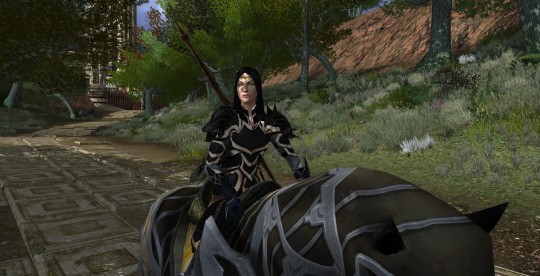


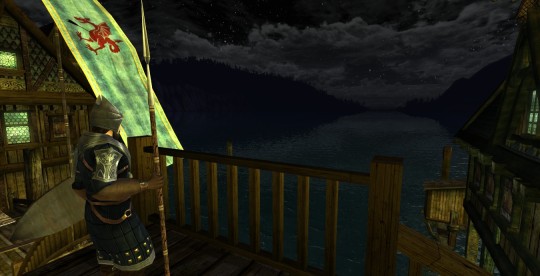
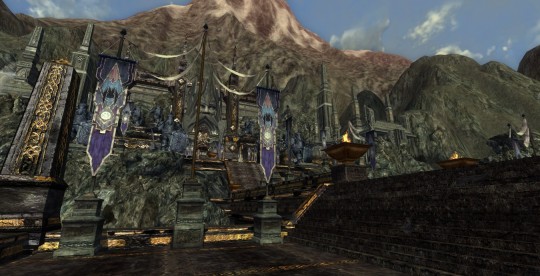

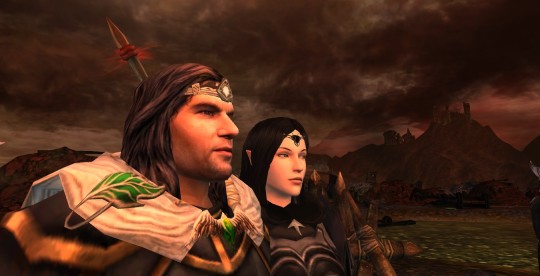
I always thinking about LOTRO but i can’t even manage my time to go back and play at all..plus the DLC is so expensive :/ *for my currency* but here, i would like to share all my memories in this game...many beautiful places and it feels like going back to our journey again and again.
All of my friends stopped playing this game for years...but i’m still the one going back..walking into mordor alone *and logged out* LOL and also i’ve visited Eryn Lasgalen :) my loyalty lies with my king.
ps. i love the title : Friend to the Heir of Isildur, will use this title forever.
12 notes
·
View notes
Text
The Anti-Hero (Part 2)
Summary: They always told her a few key things; Humans are not loving, And Humans are not divine. Midgard is not safe, And Midgard is not kind. Earth is not good, And Earth is not pure. Terra is not clean, And Terra is not secure. The unspoken truths of humanity. Maybe it was high time she believed them. Pairing: Eventual!Peter Parker x Reader Word Count: 1198 Warnings: None.

Y/N fumbled - rather inelegantly - through her bedroom window. It had been another long day, in which the girl had raided her fifth shop this month. She wasn’t exactly the worst villain around but bad enough to warrant the attention of small-time heroes like Spiderman.
It had been some years since she had seen the Avengers and the girl still woke up in a cold sweat. Considering the fact that the last time she had seen them they had beaten her mentor – the strongest sorcerer she knew - she wasn’t really up for coming face to face with them again.
In fact - if you didn’t count her criminal activity – Y/N lived a calm life, so far off the grid that even SHIELD thought her dead. The only trace left of her was the girl in green and gold, or rather Mischief. It was an alias she had taken to honor her imprisoned mentor.
When she donned her mask of elegant gold, she was able to make them all pay for what they did. Mischief made the humans pay for the life of Loki. The innocent life that they had ripped away from her and condemned to a prison cell. The life that the girl in green and gold would not forget.
“Where have you been then?” Y/N whirled upon the voice, a dagger in hand. “Put the weapons down child.”
The girl rolled her eyes, unclasping her cloak and threw it over her desk chair, “Hello to you too, Mordor.”
“You missed training,” Was all the man said.
“It’s Saturday.”
Mordor gave a heavy sigh, “You asked me to be your mentor. That means you follow my rules, that means training on Saturday.”
“I didn’t ask you for anything,” Y/N snapped. “Just because both of our relics are Vaulting Boots of Valtorr and you are required by Mystic Law to train me, does not make you my mentor.”
Mordor mumbled something about disrespecting the ancient arts and stormed from the room. Y/N let out a relieved sigh, she really did hate him. Sure, he helped provided a roof over her head – although she paid her part in rent – and trained her in combat and the mystic arts. But by the gods, his need to replace Loki was infuriating.
And yet Mordor was still one of the only Midgardians that Y/N could tolerate. Not that he knew that in fact Mordor still thought she was human. The man was terribly oblivious, to the point that he completely ignored the fact that her magic was something never before seen.
Loki had once told her that she was rare even among Asgardians. They were called Elementals. Magic wielders with the ability to control fire or air or water, or in her case soil. It was probably what drew Loki’s attention and lead to him agreeing to mentor her.
Since her first lesson all those years ago, her powers had only grown. What had once been a feeble ability to push and pull water had developed into control. Her skills with soil had matured until it bent fully to her will. Loki had taught her most of what she knew but she’d had other teachers after him.
Thor had been the one to train her in all things battle. From war planning to hitting people over the head. It had gone hand in hand with her dagger-wielding abilities and scheming mind – nurtured by none other than the God of Mischief.
Frigga had taken up where Loki had left off after his first death. Her teachings had been less about the complex spells Loki had taught her and more theory. It had been Frigga who taught the girl how to build up reserves of magic, set up wards and enchantments that lasted longer and how to do the more trivial spells that Loki had overlooked.
Of course, Y/N couldn’t give herself and the many mentors she’d had, all the credit. She’d been gifted with countless magical relics to aid her. Everything from the vanishing daggers from Loki, to her battle armour from Thor, had played a part in perfecting her skills. Lately, her favorite relics were the Vaulting Boots of Voltorr, which – like Mordor’s own boots – allowed her to jump through the air.
“Is that man still trying to replace me?” Y/N whirled again, summoning a dagger from wherever they went when she vanished them. She threw one, allowing it to fly through the man, “Oh, calm down.”
“Mind telling me when you’re coming to visit?” She huffed at the Asgardian Prince before her. “Not that it isn’t pleasant to hear from you, Loki.”
“I am pleasant, aren’t I?” He mused, “I thought you’d want to be filled in. Ragnarök was averted, we destroyed Asgard, so we shall see you in Midgard.”
Now you may be wondering what’s going on. It was simple really. Y/N was stuck on Earth but that didn’t mean she liked to stay uninformed. In fact, for years now she had been squireling away information. Including the resurrection – several resurrections actually – of her long thought dead mentor.
You see Y/N was an Asgardian and if Loki taught her anything it was this; Knowledge is power, and information is currency. So, while the girl had resorted to burglary to bring in a steady income she was beyond rich. It was information from the last Valkyrie that had led her to Loki. Who – since his time on Sakaar – had been contacting her daily through illusions.
“Gee thanks,” Y/N rolled her eyes. “Do you want to elaborate on why our realm was obliterated or am I supposed to guess?”
“I told you about our estranged sister Hela,” She nodded slowly, piecing it together. “She-“
The Loki illusion turned as if mirroring the actions of the real man – who was currently in a spaceship if she was correct. An alarm started blaring from somewhere behind him. The Prince turned back to her, wide-eyed. A mask of calm locked quickly into place, but she saw it. That one moment of terror.
“Someone’s on the ship,” He told her.
Chills crept up her back and suddenly she was a scared child, “It’s him, isn’t it? The mad titan.”
“He’s after the Infinity Stones,” Loki nodded grimly in conformation. “They’ll go for Midgard next. Swear to me that you will not get involved.”
“I can help.”
“You can help by staying put,” He frowned when she opened her mouth to protest yet again. “All will be fine, but I need you to swear it.”
Y/N huffed a small sigh. He had always kept her out of the real fights. Sure, on more than one occasion she had tagged along with the two Princes and their warrior friends but whenever a real battle came up… Loki was always there to make her promise to stay safe, to hang back. It must have truly been serious for him to demand her to do so now.
“Okay,” She bowed her head. “I swear it.”
“Then the sun will shine on us again, child.” He gave her the smallest of smiles before turning, a dagger materializing in his hand and then the illusion disappeared.
“It better.”
#loki#peter parker#loki laufeyson#loki layfeyson x reader#reader#peter parker x reader#peter parker x y/n#spiderman#spiderman x reader#spiderman x y/n#loki x reader#y/n#peter x reader#peter x y/n#karl mordor#doctor strange#stephen strange
59 notes
·
View notes
Text
the ^START OF THE “actual” fic this time… In Which Númenor Relearns a Vital Historical Lesson: Do NOT Invite Furious, Grief-Driven Noldor Into Your House (after about 1k more of geopolitical buildup, shhh if you’re here for this then you’re here for this) (PART 2 OF 3 I GUESS)
Ok first jot down that when Celebrimbor and Annatar disappeared in SA 1221, literally 0 people were surprised when they came back married. The surprise was a) it only took 5 years, and b) the whole…Sauron thing
By this point, Ost-in-Edhil was the center of a burgeoning, technology-driven soft power empire of trade and culture. Celebrimbor was not, to be clear unaware of this. But they weren’t doing anything by force, they weren’t even doing anything underhanded with currency exchanges or cultural assimilation, they certainly weren’t harming the native landscape—changing and cultivating, yes, but in accordance with natural environments… [I believe firmly that the natural instinct of elves, in even the most industry-leaning of circumstances, would lead to a basically solarpunk world]. They shared what they made of not freely, then cheaply: lamps to light the night! Sophisticated, long-lasting systems of sewage, roads and agricultural aqueducts! Assorted more dramatically powerful works! Eregion was simply where it was at, and everyone wants to be where it’s at.
If ever they flexed their power, it was for rules like “we don’t trade with slave-holders.” This did, in fact, hold back the more forcefully growing Númenorean Empire, the other node of where it was at… (RIP to Lindon, which became, at best, the Washington DC to Ost-in-Edhil’s NYC/Silicon Valley hybrid.)
But the thing about issuing a general international announcement along the lines of, “We are recalling all Rings of Power, Palantir, and other ‘magical’ objects of Class 3 and above, because someone introduced a major flaw into the structural enchantments; for more information contact Annatar, who will explain everything unless he wants to sleep on the couch”…
- (“That would set us back at least a thousand years!” “We are doing this right or we are not doing it at all! Look what we’ve built with a star of Fëanor on the gate—do you think yourself not up to the challenge of the recovery?”)
…The thing about issuing that sort of announcement, and then clarifying when requested, is that it does a real hit to your soft power. The general results were these:
- the Elves, many of whom personally remembered the evils wrought by the Lieutenant of Angband and Lord of Werewolves, collectively lost their shit infighting for about a century. Mostly just with words, trade, and diplomacy, rather than swords, but no less violently for that. A general trend was everyone in Eregion shouting furiously, then turning around as one and snapping that this was clearly their problem and everyone else should back off. Nobody else took that well.
- - words really cannot express how angry Galadriel specifically is about all of this
- among Dwarves and a majority of continental Men, it was, “Okay, that’d bad, obviously, gonna be side-eyeing you for a while now…but it kinda seems like the Elves are re-fighting millennia-done wars again, and we’re more concerned that the Palantir network gets running again ASAP and the aqueducts in West Harad still get installed—oh, we can finally go cleanse Mordor, though? Good.”
- - (“It’s a valuable, essentially self-sustaining military reserve that isn’t harming or even inconveniencing anyone—” “Absolutely not, Annatar! What in the Darkness did you think I’d say to this? Let them die!”)
- the Númenoreans, in an exciting combination of (weaponized) Elvish historical knowledge but very Mannish inexperience and lack of personal lesson-learning, shifted quicker than anyone anticipated from “our friendly business rivals in Eregion :)” to “Elves are blind and corruptible at best, and there’s no evidence that they’re not all actively evil! Let’s start taking slaves to really fuel our growth.”
So...
Jump forward another thousand years or so. Ost-in-Edhil is still a center of trade, art and technology, but their trade agreements are more…complex…because they are trying to get goods and benefits to people who need them in the increasingly harshly ruled Númenorean Empire, without inciting war. It’s still the shinier city than any in Lindon, metaphorically and literally. They did make new Rings, which Annatar swore up and down and with every fiber of his being (as confirmed by Celebrimbor) were not corrupted/corruptible in the same way, nor in any way. But where before they forged Nine then Seven then Three, this time they started with the Dwarves, who were most trustworthy and willing to trust, and then Elves, always trustworthy and eventually, tentatively, willing to trust. But Men…Men were increasingly dubious, collectively, these days. In both directions. I don’t think they forged Nine again. (This did not, of course, engender more trust.)
For Númenor’s part, Elves were envied, and loathed and scorned all the more for that envy. Their time has passed, why are they still so hoarding of their gifts, etc etc. To what extent they recognize that there’s also a (reformed from evil) Maia living with the Elves, it weaves easily into the narrative.
- (“Orcs, Celebrimbor—I’d expect this willful blindness from the Peredhel, but not from you! They’re going to attack, and I need at least three decades to breed and train even a small army—” “No!! If you cannot free them, let them rest, Annatar! We will handle our own problems!” Annatar, who could definitely free the myriad orc fëa from the fiery hell pocket dimension in which they’re trapped while not embodied, and who has definitely told his husband that said pocket dimension is neither fiery nor hellish but is completely unfindable and indestructible to all but Morgoth himself, because the last time he told Celebrimbor about a bunch of weapons he had lying around, Celebrimbor insisted on destroying 19 perfectly good Rings of Power: “…Fine.” Also Annatar: [silently initiates the breeding and training of orcs in the far east, where Celebrimbor doesn’t need to know about it until it matters])
Númenor, of course, attacks first, and very effectively.
I’d say the actual plot starts here but that’d be false. This story isn’t “plot”, it’s political overviews and snippets of dialogue.
Here is a basic geographical fact of Second Age Middle Earth: Númenor is a seafaring empire, and Eregion is inland. Between Eregion and the sea lies Lindon, whence Gil-galad rules as High King of the Noldor, with due respect from many other Elvish peoples as well, in Middle Earth.
Here is a fact about time and fate: the end of the Second Age of Arda is nigh, and the melody of Elvish Kingdoms in Middle Earth is coming to a sharp decrescendo.
In short: Númenor attacks Lindon first, and it does not fall easily; indeed, many of its people evacuate or retreat in safety. But Gil-galad does not; Gil-galad shoves Vilya (II) into Elrond’s hand, claps Círdan on the shoulder in farewell, and stays to hold the line to the last. An unnatural storm erupts across the Gulf of Lhún and sweeping upriver at his death, forcing the Númenoreans to hold their positions rather than chase the retreating Elves—this is later honorably credited to the wrath of the last great Elven-King, but it’s more accurate to say that, well, non-interference policies are great and all, but the fucking second Círdan himself was clear, Ossë started smashing ships, while Ulmo looked in the opposite direction. There’s non-interference policies and there’s ancient friendship, and there was only so much they could tolerate in letting the attack come from the sea.
.
“Annatar,” says Celebrimbor when Elrond arrives in Ost-in-Edhil with a tattered host of refugees and tears on his cheeks, “you started breeding orcs 20 years ago when I explicitly said not to, right?”
“I love you so much,” says Annatar. “Yes. But I had to start from nearly scratch and there’s barely a few regiments worth, and they’re half a year away at best, if I stop all breeding and abandon the young, because someone refused to be realistic about the immediacy of this problem—”
.
“Don’t be stupid, they’ll hang you as a traitor or some nonsense,” Celebrimbor tells Elrond a little later. “And Celebrian won’t leave without you—so go! We’ll be right behind you!”
.
(To be clear, they don’t intend to get captured. But Ar-Pharazon’s armies are competent and Ost-in-Edhil is built for welcome, not siege, and…)
.
1 Day after the Fall of Eregion:
[insert @undercat-overdog ’s inspiring 2 short scenes here—or maybe Day 1 and Day 20 or so, long enough to bring notable prisoners back to Númenor—Ar-Pharazon doesn’t necessarily strike me as a “lead from the front” guy]
.
22 Days after the Fall of Eregion:
I could have this entire empire tearing itself apart in civil war in twenty, thirty years tops. Annatar's mental touch was, as always, like metal just barely cool enough to touch and the eternal wheeling patterns of stars, confident and scornful and surprisingly gentle. Can you endure that long? Then we can easily go home and pick up all the pieces, and get back to work. Also, this entire island is a quiescent supervolcano.
(A few notes, at this juncture, on Celebrimbor of Eregion, first named Tyelperinquar and Curufinwë:
He is, by any reasonable standard, a good person. He is SUCH a good person. He chooses to be good, he tries to be good; he even tries to be nice, which comes even less naturally.
He was, however, raised to hold grudges and to have a god complex, the latter especially in direct proportion to his skill in craft. And he is very, very skilled in craft.
(A craft which, for the first 550-odd years of his life, was spent on swords and armor far more than on gems, first in Formenos and then in bitter Beleriand.)
And the Númenoreans just killed one of his very few remaining cousins, ravaging a city he'd helped build in the process; and then they'd come to his city and not just ravaged it but killed many more of his friends and people; and overall they were making this all not work, his gentler, kinder, trying-to-be-better version of the World Improvement Plan wasn’t working, and that did hurt. That was a bitter disappointment, enhanced by grief and fury and having come of age at the start of a 500-year siege…
And, fundamentally, to borrow a phrase from another great romance: he is just enough of a bastard to be worth liking marrying - to Sauron, Gorthaur Lord of Werewolves, whose standards are much farther along the Bastard scale that Crowley GoodOmens'.)
Volcano’s good, if we can evacuate innocents first. A civil war will catch them in the crossfire too much, including in the colonies… Celebrimbor replies, staring vaguely at a hair-thin crack in the stone wall of his prison cell. We need to destroy, as much as possible, only Ar-Pharazon and his party - the active proponents of war and empire. On all levels, so thoroughly that some of the government would collapse - that's fine. But the main goal of destruction needs to be the ability and will to empire itself. A foolhardy military campaign that even the survivors cannot politically recover from, perhaps?
You have the best ideas, Annatar breathes silently, and I know just the target. Though I think...50 years, for this.
And the volcano, Celebrimbor thinks furiously, remembering Gil-galad’s crown in Ar-Pharazon’s hands.
Oh, Tyelpe, murmurs the master of the Forge of Oroduin, the chief architect of Dagor Bragollach, you know I love a good volcano.
.
41 Days after the Fall of Eregion:
It is important, when arranging the downfall of an empire, to take all variables into account, both those one wishes to remove and those one wouldn’t mind preserving. Fortunately, the Faithful House of Aphanuzîr is still powerful enough, popular enough, that its lord and his son and grandsons are still invited to court, even though Aphanuzîr’s childhood friendship with the king now more closely resembles barely hidden mutual contempt. Perhaps because their friendship now more closely resembles barely hidden mutual contempt, and At-Pharazon likes nothing so much as a good gloat.
Within a month Annatar is at these same parties, wearing just enough gold to be interesting but not nearly enough to be fashionable or respectable—he is still a prisoner and prize of war. But he makes sure to look beautiful for the king anyway, and to watch Aphanuzîr for the best way in as well. The sooner they can start moving non-military people off the island, the better, and for that they need Council votes.
.
8 Months after the Fall of Eregion:
“The reason your Elvish slaves keep dying is that you aren’t keeping them sufficiently engaged with their work,” Annatar explains, mostly truthfully. “Elves are fragile, you know—oh, physically, they can often endure, or at least heal from, things that most Men cannot. But mentally, emotionally? If they despair, or sometimes even if they feel bored enough, they die.”
Under the eye of two guards, the Captain of the King’s Guard, and the Master-Shipwright of Rómenna, he cups Daerith’s jaw in his hand, and feels her pulse beat too fast. He chose Daerith for this exercise, out of the dozen-odd Mírdain captives, for two reasons: first, that she once rode on Ard-galen with Fingon the Valiant, and she can not in this moment be certain how much he is acting. It makes her own wide-eyed tremor and obvious desire to spit in his face much more realistic.
Second is that she is a superb analyst of systems failure.
He points her face towards the half-built warship before them and says sweetly, “You will be working on installing the armaments today. If you alert the Master Shipwright to anything that seems flawed in the engineering, or to anything that might be improved, you will be granted an hour of starlight tonight. If you miss anything, or deliberately fail to mention something, you will be whipped. Am I understood?”
“Yes,” she says stiffly.
“Starlight?” The Captain of the Guard is skeptical, as Annatar drops Daerith’s chin and sends her toward the ship with a shove.
“It’s like meat and drink to them,” Annatar says. Again, mostly honest—though his personal record for keeping an elf alive in darkness is longer than the lifespan of even the most stubborn Númenoreans.
(It is engaging for him, too, to flex skills he hasn’t used in many millennia. Though it isn’t…as satisfying as it used to be, he thinks, to see the fear and hate in a prisoner’s eyes, to feel it burn through their spirit. He’d rather stay and watch Daerith smirk internally as she figures out how to take the ship apart.
But duty calls…)
“I believe His Majesty ordered that I myself examine the harbor chain?” he says, and gestures deferentially at the captain. “Please, sir, lead the way.”
okay so this is actually @aragornsrockcollection‘s fault for suggesting that Sauron/Mairon/whatever is the Maiar of math, because I like math, I really unironically like math. Now I have to like Sauron a little, or at least mourn Mairon and Annatar a little more, and daydream about What Could Have Been. So here’s how my “the Gwaith-y-Mirdain sink Númenor, Leverage-style” AU would happen 2k of silvergifting AU building up to, but not actually including the Gwaith-y-Mirdain sinking Númenor, Leverage-style:
Backround:
The turning point was, Annatar went to Mount Doom to forge his One Ring and he found that it was…lonely. Control, yes, he needed control, and power, yes, he needed power, because without these he couldn’t create the ordered world he dreamed of. But it was just…it’d been pleasant, working with the Mirdain these last 400 years. It’d been a memory of the glorious company in creation that he had once upon a time in Aulë’s forges, before he found greater purpose. It’d been disordered, yes, but now and then the hammers struck in time and the ideas shouted across trestle tables clicked together, and a butterfly flapped its wings and the world changed…
And at the center of it was Celebrimbor, who was, well…
His One could wait, he decided, turning away. At least until they’d made Three for the Elves - and why was he risking upsetting a power base he already had? This was Fëanor’s grandson and a city of Noldorin crafters. A dwarf had convinced Celebrimbor to include stylized Silmarils in the city’s ornate front gate! He - Gorthaur, Mairon, Sauron, Annatar - had spent so long building trust and power in Eregion…it’d be easy to point it in a more useful direction. (And maybe, at the center of the pattern he was building, instead of One there could be Two rings, in perfect synchronous orbit?)
Keep reading
#my fic#second age shenaniganry#fanfiction#numenor#btw yes ceescedascity's orc bank IS happening in the background of this au#mostly bc i think it's hilarious#the world has been relatively orc-free for the past millennia or so; annatar either let them die off or actively had them#kill each other or something bc he was being a Publicly Good#so sly and reckless have NOT heard about a) the marriage or b) who exactly the marriage really involved#but they'll find out eventually...#'he /couldn't bring himself to attack sauron/' crack humor reprise...#they'll find out soon enough to bc you bet your butt sly and reckless were among the first annatar pulled out of hte crucible when he#started building a backup army in the far east. who better to protect celebrimbor? he could rely on them if they remember or not
355 notes
·
View notes
Text
Laos - Thakék loop and 4000 Islands
Hello from Cambodia!
After our flight we had a brief stop over in Udon Thani before catching an early bus to Nakhon Phenom where we would then get another bus to cross the border into Laos. The ride was long, hot and smelly due to the door for the toilet being broken, and the journey felt like it took forever...5.5hrs (we were expecting 3hrs!), so we were relieved to get off the bus at around 4pm and find some lunch. Two minutes before getting on the bus we had the minor panic of not being able to draw out any cash at the bus station, therefore leaving us without any Loas currency to pay for our visas! Thankfully, despite Emily’s small meltdown, all went smoothly with the visas though and there was an ATM at the border. We reached Thakhek and got a Tuk-Tuk straight to our hotel, a delightful affair which had a ‘massage’ parlour in its car park - Spud did a double take when he saw what the girls were wearing!
Although we were both ready to call it a day, the plan was to leave early the next day to ride the Thakhek loop so we wanted to arrange a scooter that night before dinner. We got a good feeling from the rental guy and after he said he was happy for Spud to take a proper look at the bike the next morning we went with his recommendation of a dreaded 125cc automatic.
The next day we split our bags down to two small day sacks, picked up the bike and headed onto the loop. We had a bit of a problem getting out of Thakhek with our hand-drawn paper map (although, no thanks either to Spud’s sense of direction - or his inability to possibly believe that he might have it wrong) but after that hiccup we were off! The roads were a bit of a shock to begin with as we were basically on a Loas highway. Long and straight with lots of long haul trucks overtaking us and kicking up dust. Not to mention the sections of the road that disappeared before your eyes and turned into very rough hardcore every 2 minutes. Nevertheless we cracked on and visited the Elephant cave and Tham Nang An cave which was beautiful, and massive. We had a boat ride to begin with into the cave which must have been 1-2 miles in length. The water was so still making it feel really eerie, especially since we were the only people there. Once we got to the other side we could walk amongst the rocks and felt as though we had reached Mordor from Lord of the Rings, our guide took us a a ‘holy well’ and invited us to drink from the water there - a refreshing if not slightly muddy beverage.


Once we got back to the scooter it was time for us to get some miles under our belts as the caves were in the first 20km of the 450km we would be riding over the next few days. The road became a lot more enjoyable after turning off the highway and Spud allowed Emily to share the riding (he does love being pillion) to our first stop - Sabaidee Guesthouse, where we met another ten or so riders also doing the same journey. The evening was spent playing boules, drinking a few beers and eating the BBQ’d food put on for us.

After speaking to the other guys we decided to cut our journey down by one day to three rather than four. We figured that there was perhaps not enough to do over four days, so the next day we aimed to reach Konglor cave which was apparently a highlight of the trip. The roads were much better again and after a few stops to take pictures we arrived at the Cool Pool, which is a stunning natural pool of clear turquoise blue water. Needless to say, after a hot dusty ride we didn’t hang around and jumped straight in. Whilst we were at the pool most of the group from the previous night arrived, so we hung out with them for a while before leaving to get some lunch. The rest of the day was quite relaxed and we got to Konglor at around sunset. The ride along the plateau to the cave was very scenic and the colours made by the sunset were beautiful. We buzzed through multiple littles rural villages, spotting all the animals, including dozens and dozens of babies - calves, chicks, kids, piglets, puppies, kittens, ducklings, and baby water buffalo. We had arranged to meet up with Dorian and Marie, a French couple we had met at the first guest house, so we had dinner with them and planned to do the cave together the next day.
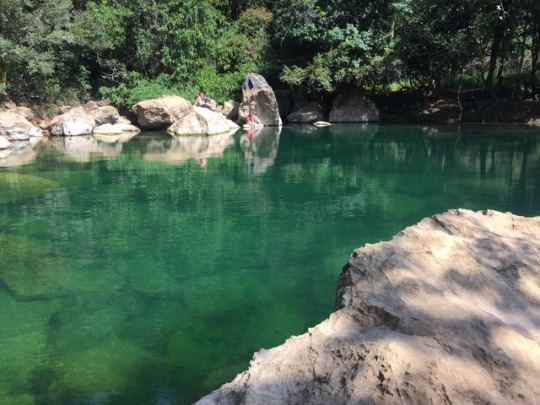
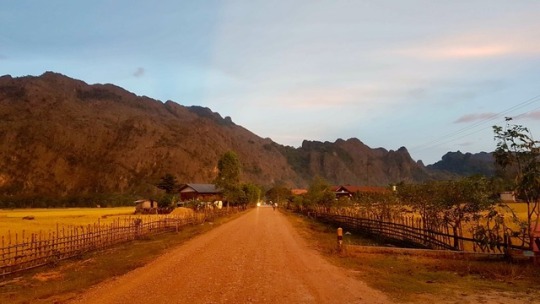
We had an earlier start the next morning as we had 80-90 miles to ride after the cave, and knowing what the roads were like this was going to take us time. Konglor cave is a gigantic cave complex, and the main area is a river which has run a huge tunnel through the rock which leads to a nearby village. To get to the village you need to take a boat with a guide and we estimated that the length of the journey was between five and six miles in complete darkness. We were glad we had bought a head torch before we left, so we could just about make out the huge caverns in the tunnel and appreciate just how good the guys manoeuvring the boats were around shallow water and bits of rock jutting out in the pitch black! Halfway through the cave we were dropped off to do a short walk between up-lit stalagmites and stalactites before jumping back into the boats. One section ended up with Dorian and Spud helping the guys lift the boats over a small rapid as the water was too low to motor up and over it. When we eventually reached the other side it was pouring with rain so we bought a packet of hot chocolate and some hot water from one of the vendors, and after a brief walk around the huts of the village we set off to get back to the other side.

We were burning rubber again by about 1pm, and to begin with the roads were smooth and enjoyable. As soon as we joined the final highway section though they got bad again. Lots of trucks and difficult surfaces for our small wheels. Some of the sections were quite torn up (half way between a gravel drive and a sandy beach!) but we were rewarded with a stunning view at the highest point of an ancient limestone forest, before we shot back down to more level territory. We reached Thakhek at about 6pm, dusty sweaty and tired, but our evening had only just begun. The four of us had agreed it was best to leave Thakhek that night (its a bit of a nothing town) and catch a bus to Pakse which was about six hours away. We ended up booking tickets with our rental place which was a ‘VIP sleeper’ that left between 12.30am and 1am depending on the bus, dutifully we arrived at the shop for our transfer at midnight as instructed...at 3am the bus eventually arrived and could not wait to get on and get some shut eye! The bus was interesting to say the least. In our heads we expected a coach similar to the comfortable one in Thailand where we were served water and snacks in our reclining chairs. This was far from the case. The coach was a galley of narrow bunk beds, which by the time it reached us were full. Luckily the conductor arranged a few people and the four of us ended up with two bunks to share which was fine, but the downside were that the sheets and blankets smelt like they might have never been changed and that the beds were at the back of the bus over the engine which was hotter than the sun. Our feeling of griminess was moving towards unexpected levels though we were able to get some broken sleep between the gigantic potholes in the road. As soon as we got to Pakse we negotiated a ride to the 4,000 islands in a mini-van. By this point we had adopted a Dutch traveller as well, so the journey ended up being quite cheap and included a boat ride across to Don Det, the first island we planned to visit.
The 4,000 islands are based on the Mekong river just shy of the Cambodian border. The river is gigantic and its clear why its know as being mighty. The boat ride was easily 10-15 minutes and even then we were only taken to one of the first islands you could see. As soon as we reached Don Det we knew we were in for a few days of total relaxation, the island is small, with mainly rice farming and tourism as the main incomes. We found some desperately needed sustenance we strolled along the main strip next to the river front looking for somewhere to stay. After looking at a couple of really grotty riverside huts, we decided to sack off the view for a little more comfort and picked some quaint little cottages set back slightly from the river front. After jumping into a cold shower (a record 40 hours between washes 😫), we relaxed for a couple of hours, both of us getting a restful nap before walking to the west side of the island to watch the sunset whilst drinking some local LaoLao cocktails. An early night was had by all.

The next day was a scorcher, and we had decided to walk onto the neighbouring island, Don Khon, to visit a big waterfall that was part of the Mekong. Unfortunately the pictures that the ‘attraction’ advertised (free zip lines, a nice looking pool with blue water, a beach, and a splash pool) didn’t turn out to be quite accurate. Having built up a good sweat walking over, telling ourselves that we could cool off in the waters of a nice cool pool...we looked on in dismay at the pool which seemingly didn’t exist, either flooded in the previous wet season leaving just sludge in the bottom of it, or never finished, and the zip lines were on the floor. Brilliant.
(Ahhhh reality....)

Nevertheless we made the most of the falls which were quite spectacular, as the sheer amount of water caused them to be crescent shaped. We also lounged on the ‘beach’ for a little while and briefly swam in the Mekong before heading back. By the time we reached our little cottage we were all sunburnt, but nothing that a dash of aftersun wouldn’t sort. We had a quick turnaround and headed back to the sunset side of the island for more drinks and card games. We had had a late and big lunch so shared a chicken burger for dinner. Oh what a mistake this turned out to be...
We had a nice day the following day, as we rented bikes so were able to get round a bit quicker than the previous one. Again we went onto Don Khon but this time ventured to the far side which promised good views of the Mekong and more traditional Loas island villages. The cycle was suspiciously straight, and it turned out that we were using the old French railway line which lead to a port.

En-route we stumbled across a load of parked scooters and Laotian men cheering from a bush; it was all a bit strange. It seemed like they were having a good time though so we popped our heads through the undergrowth and found that they were hosting a cock-fight. Thankfully although the cocks looked double ‘ard’ they didn’t have blades strapped to their feet so the fights weren’t to death, only to a decision on who had won. How this was judged we will never know, but what we do know is that most of these guys were smashed on Lao Lao (local booze) at about 10:30am. As soon as we turned up they spotted our white faces and Dorian and Spud were persuaded to drink from a mangled plastic bottle that had pieces of banana and what looked like chestnuts in it. It was marinated whisky which packed enough punch to hang around on their breaths for a while after!

We left the merry lot to their games and cruised on. After a small lunch on the far side of the island we decided to head back a more scenic route that the boys had spotted. By the way, the views were good and you could see a particularly wide part of the Mekong and surrounding islands, but nothing to rave about. Almost immediately after turning off the old railway we were in full on jungle and it didn’t take long for us to be forced back by a fallen bridge. The boys were in their element, and with testosterone flowing, and despite some female protestations, found us a route around the first bridge. They were up-front hacking away at bushes with their bikes determined to stick to our tiny path. But 15 minutes in we found an even worse fallen bridge with no way around. We were also being persuaded to turn around by a guy with a machete who had somehow monkeyed his way across the bridge a little too quickly for our liking. Somehow we wouldn’t have been surprised too surprised to find out what he was protecting! It was then that Emily screamed that she had a leech between her toes! After checking the floor and our bikes it was clear we were in the middle of an enormous infestation of blood sucking of leeches. There were loads of them; wiggling on the frames of our bikes and the floor hoping to catch onto our flesh. Somehow Spud got away with it but Emily, Marie and Dorian all got bitten on their feet, so needless to say we quickly got out of there and back to the safety of the old train line.
The afternoon and evening was a relaxed one, and we spent some time arranging our next moves. The Frenchies that we had spent time with over the last week were due to move on the next day, but we decided to stay an extra night to get ourselves sorted before heading to Cambodia, which in the end was a huge blessing. Remember I mentioned that the chicken burger was a mistake? Well that night Emily fell ill with food poisoning and spent the whole of the next day in bed with a raging fever and D&V. It was a down day for Spud who played the role of Francis Nightingale very well, he might say so himself.
She still wasn’t right the next morning so we made sure to check out as late as possible, and thankfully we were able to get straight on a boat to the mainland. We took things slowly, stayed hydrated and made sure we were 100% prepared for the crossing into Cambodia after the worries of crossing into Laos. Once the Tuk-tuk drivers had stopped arguing about who had stolen who’s business we were taken to the border, and thankfully the crossing was painless. We had read horror stories of corruption and planted drugs online so were prepared for battle, but the border was weirdly quiet. The reason for this is that all of the buses from the border leave late morning. We arrived at about midday...so we were on the Cambodian border with no way of travelling south. We took the opportunity to sit in some shade for a while as Em was still struggling, and after an hour or so we had arranged a private van to take us and a Norwegian traveller with a great moustache to Stung Treng, a halfway house of a town. Once there we stocked up on food and water and organised a night bus to Phnom Penh, which compared to the Loas bus was significantly better. We slept most of the way and arrived in the capital at 5.30 in the morning. We bee-lined for our hostel, Lovely Jubbly Villa (which we recommend by the way) and they were kind enough to let us dump our bags, use their outdoor pool shower, and rest up on the pool loungers until 7am when we could get breakfast.
Chapter ‘Cambodia’ up next!
Ciao, Spud & Poopy pants x
2 notes
·
View notes
Text
> Inspiration for every country
Nyresia is based around the word “monk” and that evolved into a theocracy and the ruling religious leaders have magic
Tinera is a never-ending search for knowledge, and the word “restore and renew,” the idea that what once was can be made better, but it must be found and understood first
Ecektus(I’ve been so inconsistent spelling this one) is based on a combination of Mordor and the idea of colonization, the rest of the world looks in and is afraid of their worship, they look out and see undefended lands.
The rest are shaky and irrelevant to the story, I don’t have much to say about them.
> map
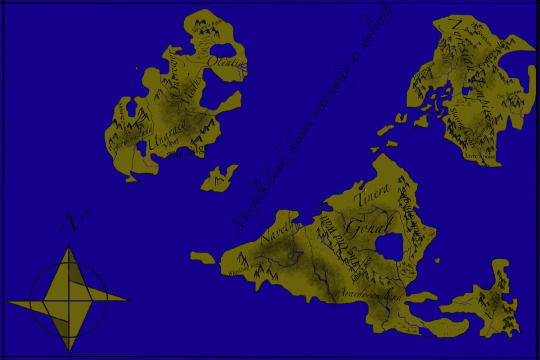
> history/ wars influence politics
First Orc War survivors built Tinera’s ideals, the “get back there but make sure it can’t go away that easily,” “there” being the Naga empire’s secretive but convenient technological utopia.
Nyresia’s claim of war-debts on the Narobi clan Naga has resulted in what is slavery in everything but name and an intense philosophical debate among free Naga about if the workers still count as Naga.
Nyresia’s conquest(yes the story happens here how could you tell) has built the monks order as it is, and has added the words “game” and “table” for 8 and 64 respectively, in the same way modern English has “dozen” and “gross” for 12 and 144. Currency is divided using this base, with different size coins for each metal to make this value equal to the coin’s value in weight.
> culture/arts/leisure
- Nyresia
Nyresians with spare time, such as being done weeding their section of field quickly, gamble and drink in buildings across the street from one another, each offering an hourly prayer to appease the monks. Town squares will sometimes have a lowered circle in the center, with cutouts in the side leading to the city’s sewer system. That is the dueling circle, and people occasionally watch judicial duels that take place there for fun.
Most art is commissioned by temples, and made to praise the Sovereigns and the government that is also the religion. Most common are sculptures, with a smooth dome where a face would be, to represent the unknown aspects of the Sovereigns. Music is strictly a thing of the monks, sang loudly in hidden alcoves of the temples to make people feel like the law is omnipresent.
Only got through those but I’ll be back
Extremely Comprehensive World-building Checklist
Inspiration for every country
Map, or basic understanding of the layout. I recommend Inkarnate for making maps!
Major historical events, think about how wars have sparked new political philosophies and how they’ve shaped cultures today (think about how Liberalism stems from a response to oppressive monarchies)
What’s the culture of the different countries in your world? What kind of arts do they practice, if the arts are widespread? What’s available for entertainment, does the average person have enough downtime to participate in leisure? What’s the architecture like? What are the major exports of each country?
Are there any major historical figures in your countries? Any influential works of literature that have been studied?
What does daily life look like for people in different socioeconomic classes?
Is the culture of country side villages and towns similar to urban areas? How does it differ?
What is the religion? Does each country follow something different, or is everyone the same? Is it mono or polytheistic? Who are the religious leaders? Do people attend church, or is worship practiced in private? Are there any rituals?
Building off of religion, is there any religious conflict?
What does the government look like? Is it an absolute monarchy? Constitutional monarchy? Or some form of democracy or republic? Who’s the leader and what other positions hold power?
Does each country have a government, or is your world ruled under one government?
What do the different classes look like in your country? Do the higher social classes look down on those beneath them? Is there a general sense of class consciousness, and class conflicts?
Climate of each country, territory, or state
Typical jobs of every country, territory, or state
What kind of transportation is available?
What does the military look like? Is there one? Do any militias operate in the rural areas?
Does your world have any myths or legends? What were they influenced by, and how do they influence the culture? Are there any superstitions around these myths?
Typical foods, what do most people eat? Is the food bland, or flavorful? How does access to food differ for different people, and does the type of food eaten change with social status?
Type of laws, do the people have any protected rights? What might get someone thrown in a cell for a night? Do your countries have an organized prison system, or do they operate by throwing everyone in the castle’s dungeons?
What kind of economy do the different countries have? Is it regulated by the government? What’s the major currency?
What’s the social life like? Are there certain customs to follow? What’s considered polite or impolite?
How are foreigners seen? Is there any hostility towards them, or are the citizens of your countries more accepting of other cultures?
What are the relationships like between countries?
What weapons are used in war?
What’s the general attitude towards war and other conflicts? Do any of your countries use a pacifist approach? Do any countries protect their neighbors from a common enemy?
Sanitary system, do they have sewage? Think about how disease was common in cities before proper sewage was invented.
Educational System for the poor, is there any sort of public education? Is there any sort of access to higher education, if it exists in your countries?
Educational system for the rich, do nobles typically hire tutors or is there a system of private schooling?
How is education viewed? Is it valued?
How do the people communicate, between cities or even countries? Is there any form of published communication, or is everything passed through spoken word?
Morality, what is considered moral or immoral?
What are the beauty standards of your country? How are different physical appearances viewed?
What’s the clothing like? What does the average peasant wear, what does the average noble wear?
What language is spoken? Do different countries speak different languages? Is there a common tongue?
Are good hygiene practices common? How often does the average person bathe?
Is marriage viewed as a religious or legal institution? What’s the general attitude towards marriage? Is it common? What does the courting process look like?
Are water and other resources readily available? Do they have to be outsourced to other countries?
Science, is it accepted? Do people actively research new things in your countries?
Going back to the prison question, what is the legal system like? Do people get trials? What sort of crimes result in different penalties? Who makes the final decision of punishment, a judge? The lord ruling over the territory the crime took place?
How is death treated? Are funerals held? Do they bury their dead, or use funeral pyres? Are funerals viewed as a celebration of the person’s life, or a time to mourn?
What kind of diseases are common? What do the symptoms look like?
What are your countries’ attitudes towards alcohol and other substances? Is drinking a common practice, or widely frowned upon?
When looking at these different aspects of your world, it’s also important to remember that the histories of our world don’t have to dictate what happens in yours. For example, public education wasn’t really common in the United States until the 1800s. On the other end of that, one of the earliest formal schools was founded in Egypt in 2061-2010 BC and many Middle Eastern cultures have pushed for education since then as the ability to read religious scripture was important.
That said, using the characteristics of different countries can be useful in guiding your own and the histories of said countries can guide you even further. Your world can resemble ours, or be totally different and backwards. At the end of the day, have fun!
3K notes
·
View notes
Text
Unlock Global Business Opportunities with an Offshore Merchant Account
Introduction
In today's interconnected world, businesses have remarkable opportunities to reach a global audience. As technology continues to break down barriers, international trade has become more accessible and beneficial than ever. However, to tap into these vast international markets, businesses need a reliable and secure payment processing solution. Enter the offshore Payment gateway - a powerful tool that can open doors to new global business opportunities.

The Rise of Global Business
Digitalization reminds us that the world is one. In recent years, global business expansion has become a strategic move for companies looking to grow and remain competitive. According to a report by McKinsey, 86% of businesses surveyed believed that their future growth would depend on their ability to expand into international markets. Additionally, data from the United Nations Conference on Trade and Development (UNCTAD) shows that global eCommerce (online sales-purchase) trade has crossed all previously set records reaching $26.7 trillion in 2021.
With such promising statistics, it's evident that businesses are eyeing international expansion. However, the key to successfully capturing these opportunities lies in overcoming the payment challenges associated with cross-border transactions.
The Cross-Border Payment Conundrum
Expanding internationally involves dealing with different currencies, varying regulations, and diverse customer preferences. Traditional domestic payment gateways often prove inadequate when confronted with these complexities. High currency conversion fees and payment processing delays can lead to dissatisfied customers and hamper business growth.
To thrive in the global marketplace, businesses need a payment processing solution that not only ensures seamless transactions but also mitigates the risks associated with international sales.
Introducing Offshore Merchant Accounts
An offshore merchant account is a special type of bank account that allows businesses to accept payments from customers around the world. Unlike domestic merchant accounts, which are limited to specific regions, offshore merchant accounts offer a global reach. It works like a regular merchant account, but it is based in a different country, often in a location with more favorable business regulations.
With an Offshore Merchant Account Instant Approval, businesses can process payments in various currencies, making it easier for international customers to buy their products or services. It also helps businesses avoid high currency conversion fees and can provide better protection against certain risks.
In simple terms, an offshore merchant account is like having a global payment solution that allows businesses to expand their reach and serve customers from different countries more efficiently.
As offshore merchant accounts gain popularity, more businesses are embracing the opportunities they offer. A survey conducted by Deloitte found that 64% of global companies are already using or considering offshore accounts to streamline cross-border payments.
Moreover, research by Mordor Intelligence projects the global offshore merchant account market to grow at a CAGR of 8.6% between 2021 and 2026, highlighting the increasing demand for such solutions.
Advantages of Offshore Merchant Accounts
Multi-Currency Processing: With an offshore or international merchant account, businesses can accept payments in various currencies. Accepting multiple currencies simplifies international transactions for customers and reduces conversion fees.
Risk Diversification: By diversifying payment processing across different jurisdictions, businesses can mitigate the risks associated with operating in a single market.
Enhanced Security: Reputable offshore payment processors provide high-risk merchant account facilities in their offshore solutions. In which they implement robust security measures, fraud prevention tools and chargeback management systems to safeguard businesses and customers from fraud and data breaches.
Global Customer Base: Accepting international payments opens up opportunities to cater to a diverse global customer base, increasing revenue potential.
Tax Optimization: Some offshore jurisdictions offer favorable tax regulations, allowing businesses to optimize their tax liabilities legally.
How to Choose the Right Offshore Merchant Account Provider
When considering an offshore merchant account, businesses must carefully assess potential providers to ensure a seamless payment experience. Here are some factors to consider:
Jurisdiction: Choose a jurisdiction that aligns with your business needs and offers favorable regulations for your industry.
Security Measures: Ensure the provider implements robust security protocols, such as PCI DSS compliance, to protect sensitive payment data. Also, it should provide advanced fraud prevention and chargeback management tools.
Payment Gateway Integration: Verify that the offshore merchant account integrates smoothly with your existing payment gateway or e-commerce platform.
Customer Support: Prompt and reliable customer support is crucial for resolving any issues or concerns that may arise during payment processing.
Transparent Pricing: Look for a provider that offers transparent pricing with no hidden fees, making it easier to budget and forecast expenses.
Conclusion: Embrace Global Expansion with WebPays
In conclusion, tapping into global business opportunities requires a reliable and efficient payment processing solution. An offshore merchant account offers a gateway to expand beyond borders, accept payments in multiple currencies, and reach a diverse global customer base.
For businesses seeking a seamless and secure offshore payment processing experience, WebPays is the ideal choice. With extensive expertise in international payment solutions, WebPays provides a robust offshore merchant account tailored to your unique business needs. Embrace the world of global business expansion with WebPays as your trusted payment processing partner.
With an offshore merchant account, you can unlock global business opportunities and propel your company towards phenomenal growth and success. Don't let payment complexities hinder your international aspirations - choose an offshore merchant account and chart a course for global prosperity.
Source url: https://paymenthighrisk.blogspot.com/2023/08/unlock-global-business-opportunities.html
0 notes
Text
Impromptu Can We Discuss: Can We Discuss the Silver Fox?
No, this is not an ok thing for SSO to do, and there are industry examples of why. Let me walk the unfamiliar through the most recent Battlefront II controversy:
Not two months ago, Electronic Arts (EA) released Star Wars Battlefront II to massive criticism. The primary complaint was that progress in the game was locked behind loot boxes and micro transactions of the most aggressive and egregious kind. Loot boxes traditionally only give cosmetic rewards, but EA’s loot boxes rewarded abilities to characters, making the player stronger for sinking money. EA’s defense was that the currency can be grinded in the game, meaning all content is purchasable through play. Here’s the catches though:
1) The game already costs $60 USD.
2) One character is about $200 USD to fully upgraded, in a competitive first person shooter. Having a fully upgraded character in a competitive game is arguably the point, making this move very manipulative of competitive players.
3) To unlocked all of the content that came at release, a player would need to play about 5 hours a day, every day, for 6 years straight. On a smaller scale, to unlock a single character, it meant 48 hours of consecutive play.
4) They released a second game in this window, Shadow of Mordor, with similar though not as bad micro-transactions, which similarly did poorly because of the model (and its on controversy).
5) All of this ended with EA having about a 20% drop in their stock value, a huge loss in profit due to protests, they’re being sued by three states and a few countries for encouraging gambling, nearly losing their deal with LucasArts, and all ending with EA having to lower their costs and then pull micro transaction from the game to fix this. What they’re going to do, we don’t know yet.
TL;DR, EA got hit very, very hard for making this move, and sticking to their guns on it is at a huge cost. But EA can eat that cost, SSO couldn’t. Now, SSO’s case isn’t one-to-one with EA’s, but it is similar enough to make the comparison.
1) It’s $75 USD for lifetime, the most cost effective membership option, which gives the player access to earning Star Coins in game through the allowance.
2) The already existing fox costs $17 USD, and this silver fox costs a minimum of $65 USD. Yes, you get Star Coins, but that’s not why people would be buying these bundles right now.
3) To purchase the red fox means 5 weeks of play, if you already have membership. The silver fox is in no way obtainable in any other way. There’s nothing inherently wrong with exclusives, but when these are the only two options for a new, very highly demanded pet, it’s manipulative.
4) SSO has no other games to fall back on, so if this game hurts from this sales campaign, it’s all SSO has.
5) There hasn’t been any legal action towards SSO, this only happened this morning, but if any of the above did happen to SSO, they could not just shrug off those losses. Considering the number of parents I’ve seen respond, it is a possibility, and the precedent is not in SSO’s favor.
SSO’s defense is that these pets are very difficult to make, regarding the already high price of the red fox, that these aren’t requirements to have, and that this is a bonus to already existing sales.
To that first argument, it’s...ok. It’s not a very good argument, considering that the most profitable model is micro transactions in small increments. This is your mobile game models, or your League of Legends and Overwatch skins, or World of Warcraft offers. Small purchases that can be earned through playing the game, but expedite a not very difficult process or remove low chance stakes. So while there is something valid in what SSO is saying, there are much better models to put these pets on, particularly since they, unlike horses, don’t unlock content or stat sets and are purely cosmetic. While it is true SSO gives its players the Star Coin allowances, that doesn’t mean that system of small purchases is invalidated. It just means SSO fails to use it.
To the second argument, this is really a massive “F U.” It’s trying to avoid the responsibility of the actions SSO makes by saying it’s the player’s fault for spending the money, not SSO’s for making the opportunity. It’s corporate as fuck, and largely diabolical when broken down. It’s your fault for spending your money, not SSO for asking you to spend an offensively large sum of it. That’s like a casino blaming you for gambling there. The point of their business is for you to gamble, but they need to be responsible too. The point of SSO is for you to spend money, but they still need to be responsible about it.
To the third argument, I have to agree with the frequent point from players that there was a sale last week. Adding this kind of offer only encourages unhealthy whale behavior. For those of you not familiar with the term “whale,” it’s a games industry term for someone who willingly will sink hundreds of dollars into a game, usually for status and/or progress. SSO already, as a more expensive MMO, is prime for whales. Adding this offer now only encourages players to be whales, and for a younger target audience, that’s a morally questionable standard to be encouraging. For the older audience and the parents playing, that kind of spending will eventually burn out.
Further, to the argument from some players that SSO needs money to pay its employees, yes, they do. But that doesn’t justify SSO’s expectation for players to just hand over $100+ USD for their game. It makes the game massively exclusive, and damages the company in the long term to only rely on their whales. While you may be able to hand over that money, or have no interest in this exclusive and therefore aren’t bothered by not getting it, that doesn’t mean this isn’t manipulative of people who are very big fans of the game or want features like this or completionists who are compulsively driven to own everything. SSO needs money, but if it wants to build trust with its player base to continue giving it money, it needs that money to be rewarded equally and fairly, or players won’t spend their money here. If the reward isn’t worth the sink, no one is going to buy it. So long term, SSO will be losing money. Instead of encouraging people then to spend money they may not even have because the game needs it, encourage SSO to more fairly reward its players to justify that spending.
Additionally, the people who would lose money in this situation is the executives, not the average employee. If SSO goes under, sure, they all lose their job, but they have to pay everyone’s salaries first or it’s a legal case. The only people losing money in this situation is the people taking the profit off the top that would otherwise be used to expand the game. Don’t think you’re helping the little guy by spending more money. That’s capitalism bull. The only people who profit here are the shareholders and execs.
Fixing this one means SSO needs to get off its high horse and apologize. There is no modern comparison where the outcome of this goes well, long term or short term, and the best thing SSO can do for its image is back down and apologize. SSO should reduce the price of the foxes, and make more colors before having this silver fox be an exclusive. Additionally, that bonus should be available in all Star Coin packages. In the future, SSO needs to avoid having high priced limited editions and exclusives, for pets, clothing, and horses, to prevent its players from developing unhealthy whale tendencies. I think SSO should additionally lower its already existing prices for Star Coins and Star Rider Membership to make the game more available to the general player base, but that’s a topic for another time.
If you want SSO to do this, definitely write in to them. You’re welcome to use any of the arguments I presented here, and if you need more, my ask box is open. But most importantly, vote with your wallet. If you are opposed to this kind of business model, do not give SSO your money, now or in the future. Encourage your friends to not give them money. Don’t just grumble about the cost and spend the money. If you are opposed to this move, don’t buy it. If enough people tell SSO with their wallets that this is not a viable option, that its player base will not support this kind of sales campaign, it will have to find another option if it wants to stay in business.
For a piece of perspective to go out on, image I tried to sell you on a $60 USD game. I gave you minimum description of what it was, though I clearly love it, and said you needed to pay another $60 USD after that to really get your money’s worth. Would you buy?
82 notes
·
View notes
Text
The biggest gaming stories of 2017
Half-Life 3 not confirmed
I know the “Half-Life 3 CONFIRMED!!!!!!!!!!!!!1!!” meme is deader than a very dead thing, yet bizarrely there was more news involving the game in 2017 than at any point this decade.
Things started in mid-January when Gabe Newell took part in a Reddit AMA which (predictably) veered onto the subject of HL3, with GabeN batting away the more obvious questions with a knowing, if overly sarcastic, tone. While there were no answers one way or the other, that didn’t stop numerous blogs and websites trying to spin anything he said into a headline to generate clicks.
Then in July something bizarre happened: the original Half-Life received its first update since 2013 which, obviously, led to all manner of wild speculation that something may be happening - wild speculation that lasted all of an afternoon before it soon became apparent it was merely a few long-standing bugs being patched out by a Valve employee.

More than anything else, though, in late August there appeared to be some sort of closure for Half-Life 2 when Marc Laidlaw, who served as writer for the series prior to his leaving Valve in early 2016, published what appeared to be a synopsis for the much-delayed Half-Life 2 Episode 3 on his website.
Of course this led to even more debate about whether Laidlaw posted this knowing full well that the game had been cancelled and he was giving HL fans a glimpse of what could have been, or whether the game is still in development and the plot has gone in a completely different direction from the vision Laidlaw wrote all those years ago, or whether it was something Laidlaw wrote to whet the appetite of fans clinging to the belief that the game might someday see the light of day - or any number of other, less feasible theories doing the rounds out there.
Winner, winner, chicken dinner
When discussing the biggest gaming stories of 2017 there is one game that stands above all else: PlayerUnknown’s Battlegrounds.
Initially released on Steam early access in March, PUBG went on to dominate the landscape not just on Steam where it smashed all manner of records regarding sales and concurrent users, while simultaneously becoming a fixture for Youtubers and Twitch streamers alike. Indeed, so great was PUBG’s reach that Steam saw a huge spike in their Chinese userbase due to the game catching on like nothing else.
And what makes the success so remarkable, both in terms of the game and its enduring popularity on Youtube and Twitch, is the remarkable simplicity of it all: the player is one of 100 combatants dropped on an island at the start of every game, in order to survive the players need to scavenge for weapons and gear to give them a chance of survival, and the game continues until there is just one player standing. From a gameplay standpoint it's simple to pick up but takes time to master, and from a Youtube/Twitch standpoint it’s an easy fifteen to twenty minutes of content per game that’s guaranteed to be different every time.
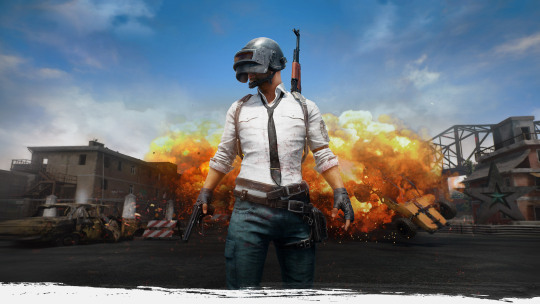
In spite of its roaring success, though, PUBG managed to keep courting controversy throughout the year.
During the game’s first few months there were arbitrary bans being issued to players when streamers accused those who killed them in-game of stream sniping, although there was little to no proof to back up the claims but the bans stood, while popular streamer Dr Disrespect found himself slapped with a ban for killing a teammate which led to the streamer threatening Brandon Greene, aka PlayerUnknown.
A short while later, when the initial GamesCom tournament was right around the corner, PUBG implemented a lootbox system which went down like a cup of cold vomit with the game’s player base, especially considering the system’s RNG was ridiculously unbalanced as, having shelled out £2.50 in real-world currency for every key to open one crate, it was impossible for players to get a full set of skins in a single crate.
Things began to really pirouette off the deep end in September when PUBG’s developer Bluehole began to throw their weight around when Epic Games announced their game Fortnite would have a battle royale mode - in spite of the fact that PUBG itself was hardly an original concept, given the likes of DayZ and H1Z1′s King of the Kill mode (to name but two) both existed long before PUBG was released, making Bluehole’s threats patently absurd.
Finally, when the game launched for XBox One late in the year (which racked up a million sales within 48 hours of launch) the game itself was just as bug-ridden as the early Steam builds were - in spite of being sold as a finished game.
Yet in spite of these controversies PUBG continues to not just dominate the landscape, but with more and more battle royale games being developed in the wake of its success it's also defined the landscape for the next couple of years.
“What’s in the fucking box?”
If there’s one trend that practically smothered the AAA gaming industry in 2017 it had to be the explosion of lootboxes - or, as some people prefer to call it, legalised gambling.
While the trend didn't begin in 2017 by any stretch of the imagination, after all lootboxes were in place for the Mass Effect 3 multiplayer back in 2012, it’s impossible to ignore how prevalent they became in the wake of Overwatch implementing the system to great success in 2016.
The first obvious sign of this new trend from the worst of the AAA publishers came shortly after the announcement of Middle Earth: Shadow of War - and, more importantly, just how it changed the perception of the game. When the game was first announced there was a lot of hype for the game, as Shadow of Mordor had been a critical and commercial success when it was released back in 2014, and the initial trailers looked promising.
Then the first whispers of microtransactions came, and things went downhill fast...

The above image, that of the orc merchant who greets you every single time you pay with real money to access content that was free with Shadow of Mordor soon became not only a meme but also something to beat the game over the head with for deciding to not only charging the premium rate for the game and for DLC after the fact, but the addition of microtransactions on top of it in order for the player to make their way through the game in a fraction of the time compared to someone who had to grind their way to bolstering their army soon turned the game from a darling to a dunce.
Yet somehow they went one further in the bad PR stakes.

When it was announced that players could buy the legendary org Forthog Orc-Slayer, designed in tribute to and bearing the likeness of Monolith’s Executive Producer Michael David Forgey who had died of cancer in 2016 with their money being donated to cancer charities, players were initially supportive - right up until people saw the smallprint stated that, while the purchase would see money donated to charity if made from 43 of the 50 US states, if the DLC was purchased anywhere else the money would be headed to Warner Bros Interactive.
Yet somehow Shadow of War was by no means the worst offender.
Among the worst offenders that followed were NBA 2K18 for making progression through the MyCareer mode almost impossible without players having to shell out once more in order to increase their player’s stats - with a remarkably predatory storefront to encourage such activity - while Forza Motorsport 7 irked players by hiding not only car and driver customisation options that were previously in-game behind a paywall but also mods that would improve your in-game performance. Even stranger was how Guild Wars 2 implemented a lootbox system - five years after the game’s launch.

Yet these paled into insignificance when the amount of jiggery-pokery going on behind Destiny 2 came to light.
The initial controversy came when players who migrated from the first Destiny soon realised that any shaders the players gained from the game’s lootboxes (sorry, “bright engrams”) were a single-use item that couldn’t be transferred between sets of armour, even though in the previous Destiny players could transfer shaders between armours to their heart’s content.
Far more cynical was how Bungie enforced grinding by deliberately hobbling players’ XP gains to prevent players from levelling up too quickly - or, to put it another way, rewarding players for being good enough and/or playing long enough to level up quickly by pulling the rug out from under them to make sure the players always knew their...sigh...bright engrams were the most efficient way to increase your level. The worst part is that Bungie didn’t even acknowledge this was a thing until they were caught - actually, no, the worst thing is that their “fix” was to remove the XP scaler...and then double the amount of XP players needed to level up.
Yet in spite of all the scumminess listed above, one game truly reigned supreme with their cynical use of lootboxes: Stars Wars Battlefront II.
Even when the game was in open beta player progression leaned heavily on acquiring characters and buffs from the game’s lootbox system, most notably how players calculated they needed to play the game for forty hours in order to acquire the likes of Darth Vader or Luke Skywalker. That’s forty hours each, not forty hours in total. While EA did respond to this by slashing the requirements to a mere ten hours (each...), considering the average Battlefront II multiplayer match lasts between fifteen to twenty minutes that’s still a ridiculous amount of grinding required.

Even after dropping microtransactions from the game entirely the day before release, albeit as a temporary measure rather than a permanent one, the controversy was not going away as EA’s stock price dropping by 2.5% on the game’s launch day (losing the company an estimated $3bn) while various government officials began to take notice of the lootbox systems that games were implementing, with Belgium’s gambling commission being the first to call them a form of gambling, while in Australia the Victorian Commission for Gambling and Liquor Regulation followed suit, and what must have really put the fear of God up not just EA but all other companies using the lootbox system is when Chris Lee, a member of Hawaii’s House of Representatives, began drafting legislation prohibiting the sale of any games containing lootboxes to under-21s, with Lee describing the system as “predatory” and Battlefront II as “an online casino designed to trap kids.”
As for the game itself, which was almost an afterthought at this point (both to EA and the consumer) the fact that it was soon discovered a large amount of content available in the original Battlefront was buried in the game’s code yet unavailable to players, while as with the original game it once again felt half-finished on release - all of which led to sights such as the one below.

And I haven’t even touched on EA’s initial defence being to make some utterly bizarre comments about not letting players use a pink Darth Vader...
“Welcome to the family, son”
Ever since its announcement, there was as much a sense of anticipation for Resident Evil VII as there was to see the game take the series back to its horror roots, especially with the game’s first hour being available to play since late 2016 and players wanted to see what else the game had in store for them. Answers didn’t take too long to come.

As we have seen so often in this generation, for example with last year’s DOOM, sometimes all a franchise needs is to retain what made the series so compelling in the first place, but bring those aspects into modern game design. In doing so not only were players rewarded with the best Resident Evil game in years, but Capcom were rewarded with a critical and commercial smash.
While players had been introduced to the Baker family when the game was revealed, and plenty more had been teased with the promotional material, it was only when the game was released when players finally got to meet Jack, Marguerite and Lucas that it became clear that Capcom had spent their time well when creating and crafting the game, as not only was the game practically drowning in atmosphere but the characters of the Baker family really began to stand out in a way that characters in the previous couple of Resident Evil games really hadn’t. Most notably was, even though the perspective had shifted from third person to first person, the game's mechanics were remarkably similar to those of the original Resident Evil games, with an emphasis on exploring in order to unlock areas of the house while the few scattered bullets encouraged players to learn when to fight and when to flee instead of mow down anything in their way with a seemingly infinite number of bullets that the post-RE4 games were.
Yet there was still an ace in Capcom’s sleeve, as they unleashed a VR edition of Resident Evil VII onto the public to give players the true first person horror experience, placing them within the grimy yet strangely beautiful environs of the Baker house - while making sure they got a good view of anything and everything that made a lunge for their face.
“This is your fault. It didn't have to be like this.”
Having seen Steam Greenlight fail spectacularly, to the point that almost 40% of the games available on Steam were released in 2016, Valve decided to step in and end Greenlight and implement Steam Direct, a service which they claimed would root out all the clag that had slipped through the net of Greenlight and make Steam a better place.
Instead the exact opposite occurred.
Rather than putting off shovelware developers by placing a $100 fee to add their game to Steam’s library, those developers just paid their $100 and carried on much as they did with Greenlight - only now they didn’t run the risk of the Steam community flagging the game being added to the Steam storefront - which additionally maintained the issue of and new releases visibility on the storefront that existed with Greenlight, as any new release was barely visible on the storefront before a cascade of asset flips swept them away.

Valve didn't help matters as they continued to put their faith in algorithms to do the job that they didn’t want to, even though the service has been screaming out for some human intervention ever since developers were bribing people with free game keys to get their games through Greenlight.
Additionally, a new form of clag started to proliferate on Steam since the introduction of Steam Direct, namely the achievement spam games that were advertising themselves based on the thousands of achievements each of the games had - which meant that, while playing them, there was a constant flicker of activity in the corner of your screen as a seemingly never-ending amount of achievements popped up.
All in all, Valve’s attempts to make Steam a better place have only served to make Steam as bad as it was before.
“I am Commander Shepard, and this is my least-favourite game on the Citadel”
Oh dear.
Hopes were high for Mass Effect Andromeda for obvious reasons, namely the words “Mass” and “Effect” were side-by-side in the game’s title, and EA were so confident in the game they went as far as to have games journalists train with the European Space Agency to promote the game.
If only some of that effort was put into, oh I don’t know...making the game?

The first mistake was to release the first ten hours of the game on EA Access and Origin a week before the game’s official release date, and it didn’t take long before the low quality of the game’s animations were splashed all over the internet, let alone the numerous glitches, with a large number of these issues being attributed to having to work with EA’s Frostbite engine in spite of the engine not being suited for RPGs such as the Mass Effect series.
One thing which certainly puzzled fans of the Mass Effect series is how Andromeda wasn’t developed by the main Bioware studio, but was instead placed in the hands of Bioware Montreal - whose main claim to fame prior to Andromeda was some of the DLC for the original trilogy.
Far more damning were the revelations that came about Andromeda’s dev cycle, a dev cycle which may have started shortly after the release of Mass Effect 3 but due to going back to the drawing board several times during development, with the studio going back and forth on whether they should have procedurally generated planets in the game or the size of the galaxy the players could explore, a galaxy which got smaller with every back-and-forth with the drawing board, all of which meant the game’s actual development took place over an eighteen month period - even though, from the outset, Bioware knew they were on a schedule and delays were eating more and more time they soon found they didn’t have as much of as they would have liked.
Just as it looked like Andromeda couldn’t take any more of a kicking, when E3 rolled around EA unveiled Anthem, the new game from Bioware’s main team in Edmonton, and even based on the short video shown it looked as if Anthem had the amount to time and effort put into it that wasn’t afforded to Andromeda.
Of course, in spite of Andromeda selling well on release, albeit drawing reviews that paled in comparison to the original trilogy, the fallout wasn’t pretty.
For the game itself it was noticeable that the planned story DLC was scrapped while Bioware Montreal were sacrificed to appease the shareholders by being folded into Motive Studio, while the Mass Effect franchise itself has been shelved while Bioware focus their energies on Anthem.
Make America Nazi-Free Again
Remember how, when Wolfenstein: The New Order was released back in 2014, nobody seemed to have any issue with gibbing Nazis left, right and centre?

Three years later and with Wolfenstein II: The New Colossus on the horizon, the world appears to have spectacularly missed the point not just of the previous game but also that small-scale event by the name of World War II, as instead we had a quite terrifying number of people critical of the game with increasingly depressing arguments which happened to serve as the basis of yet another game of Breitbart Bingo.
Yet in the face of the exact same meaningless buzzwords and baseless arguments being thrown their way in pretty much the same order that they always are, Bethesda didn’t scale back on promoting Wolfenstein II - instead they pushed the envelope that little bit further by hitting on the advertising slogan Make America Nazi Free Again and, would you believe it, it didn’t take long before the flakiest of the far alt-right gave the game so much free publicity while underlining some of the game’s themes.
“Make us whole again”
I really didn’t want this to turn into one long, drawn-out EA bashing session, but bloody hell did they make it hard not to paint them in a bad light this year.
In the same week where gamers were discovering just how obnoxious Battlefront II’s reliance on lootboxes was during the game’s open beta, EA decided to close down Dead Space developer Visceral Games while also justifying their move by claiming that modern players don’t like linear single-player games.

Is it worth pointing out to EA that some of the year’s top-selling games include the remarkably linear single-player experiences The Legend of Zelda: Breath of the Wild, Horizon Zero Dawn and Resident Evil VII? Because nobody seems to have told EA this.
An absolute failure
Having been booted off Steam in 2016 after their attempt to sue a number of Steam users went about as well as could have been expected by anyone other than James & Robert Romine, the one thing Digital Homicide had to cling to was their spurious lawsuit against Jim Sterling.
The lawsuit was dismissed with prejudice in February.

Sterling himself has spoken of the entire case at great length, and what soon becomes clear is just how divorced from reality the Romines claims were - not least the part where they couldn’t even get their sums correct for their total of damages claimed.
What’s interesting about the case is that, according to Sterling himself, he was under great pressure during the whole process not to mess it up given his messing up could have had ramifications for all of Youtube.
If that wasn’t enough final nails in the coffin of Digital Homicide, 2017 also gave us the one person whop made the Romines look almost sane: Alex Mauer.
And I’m not touching that shitshow with a 50ft cruise missile...
“You may not recognise me at first, but it’s still me...”
It appeared that the Five Nights at Freddy’s franchise had come to a natural end (again...) with 2016′s Sister Location, and there was no hint of another FNAF game being in production.
That was until a free game by the name of Pizzeria Simulator appeared on Steam in early December, which soon greeted players with this...

Oh yes, not only was FNAF back, but it literally snuck onto Steam with nobody knowing of its existence until it was there - which, funnily enough, also sums up the game’s plot.
Once the word was out and the game changed its name to Freddy Fazbear’s Pizzeria Simulator soon people were poring over the clues to see what other secrets would be revealed - or they completely ignored that side of the gameplay and instead focused their efforts on running a successful pizzeria without a single homicidal animatronic being involved with their running of the place. That’s right: Pizzeria Simulator was the first game in the FNAF franchise that it was possible to play without a single jumpscare.
If the player was to invite the animatronics into their pizzeria and endure the usual gameplay loops of listening for noises and hoping not to have a few weeks shaved off their lifespan when missing out the one audio cue that told them they were headed for Jumspcare City, then the player was rewarded with an ending not just for the game, but seemingly the franchise as a whole . And it has to be said that in a year of microtransaction hell, the fact that Scott Cawthon actually gave away the (probable) final entry of the series for literally nothing is certainly something to be commended.
Obnoxious Youtuber manages to be even more obnoxious
The most noxious thing to come out of Sweden since surströmming managed to outdo his obnoxious posturing from last year and go into full-on dickhead mode throughout 2017 - and yet somehow fail to accept responsibility for their own dickheadedness being the main issue.
Early in the year he lost both his Youtube Red show and a lucrative partnership with Maker Studios after post a stunt on his channel where he had a couple of people hold up a banner featuring an anti-semitic message - yet rather than accept that maybe none of this would have happened if he didn’t think a couple of people holding up an anti-semitic slogan was a punchline to any joke he railed against the Wall Street Journal for covering the story. That’s the story that wouldn’t have been written if he didn't have a couple of people holding up a banner featuring an anti-semitic message for the lulz.
Following that, instead of thinking it would be a bright idea to keep his head down and accept he’d made a mistake, especially as his high profile means his mistakes are the sort that could reflect on all Youtubers - which, in the year of the Adpocalypse, is another reason to not be such an idiot - a few months later he was back in the headlines after using a racial slur on his Twitch stream. While he did at least attempt an apology for this incident rather than blame someone else, his apology still had his tone deaf explanation that he blurted out the word in the heat of the moment.
Funnily enough, come the Youtube Rewind, he wasn’t invited to participate. That didn't stop him posting a couple of pathetically whiny vlogs on the subject, though...
#2017#Half-Life 3#PlayerUnknown's Battlegrounds#PUBG#lootboxes#loot boxes#middle earth: shadow of war#shadow of war#destiny 2#star wars battlefront ii#nba 2k18#forza motorsport 7#microtransactions#resident evil vii#resident evil 7#steam direct#steam greenlight#mass effect andromeda#Mass Effect#wolfenstein ii#wolfenstein ii: the new colossus#trumpists vs reality#visceral studios#dead space#jim sterling#digital homicide#five nights at freddy's#fnaf#pizzeria simulator#freddy fazbear's pizzeria simulator
5 notes
·
View notes